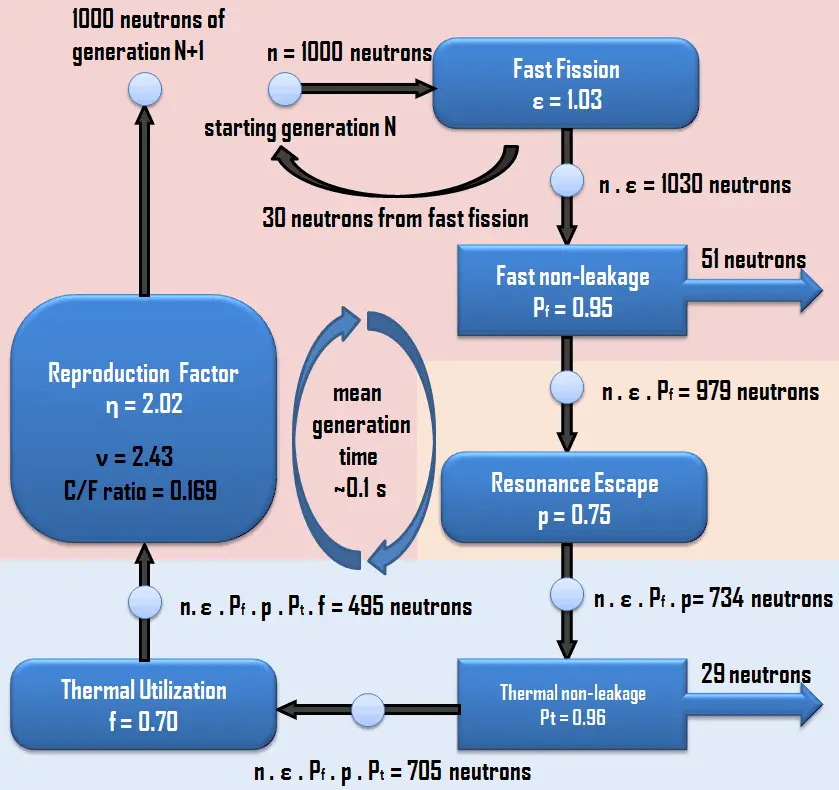The first process that the fission neutrons of one neutron generation may undergo is fast fission. The process of fast fission occurs at higher than thermal energies, mainly at energies higher than 1 MeV. The fast fission occurs mainly in 238U but also other fissile isotopes (235U and 239Pu). The fission cross-section of 238U is similar to the other fissile isotopes. They are relatively low (of the order of barns). But there is a significantly larger amount of the 238U isotope in the reactor core (in thermal reactors, low-enriched uranium of about 5% is usually used).
The fast fission process is in the multiplication factor characterized by the fast fission factor, ε, which increases the fast neutron population in one neutron generation. The fast fission factor is the ratio of the fast neutrons produced by fissions at all energies to the number of fast neutrons produced in thermal fission.
The fast fission factor is strongly influenced by the arrangement and concentrations of the fuel and the neutron moderator because the core geometry determines the neutron flux spectrum.
In a homogenous reactor core, where many moderator nuclei surround fuel nuclei, there is a very high probability that the first collision of a fast neutron will be with a moderator nucleus resulting in the significant loss of its initial kinetic energy. Therefore in homogenous reactor cores, the fast fission factor is essentially 1.00.
On the other hand, in a heterogeneous reactor core, all the fuel nuclei are in fuel pellets that are encapsulated within a fuel rod. This arrangement increases the probability, that the first collision of a fast neutron will be with a fuel nucleus. Therefore in heterogeneous reactor cores, the fast fission factor is essentially higher than one, let say ~1.03 and this value is minimally affected (in comparison with the other factors) by operational changes such as the change in the moderator temperature or fuel burnup.

